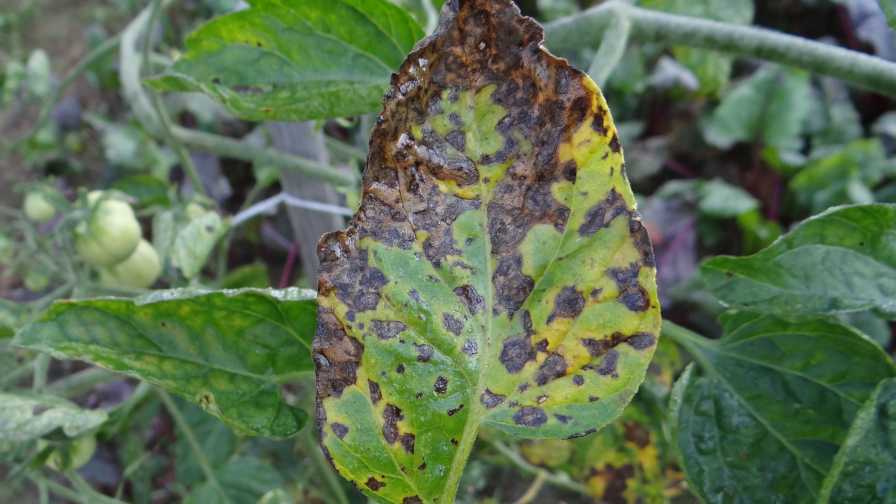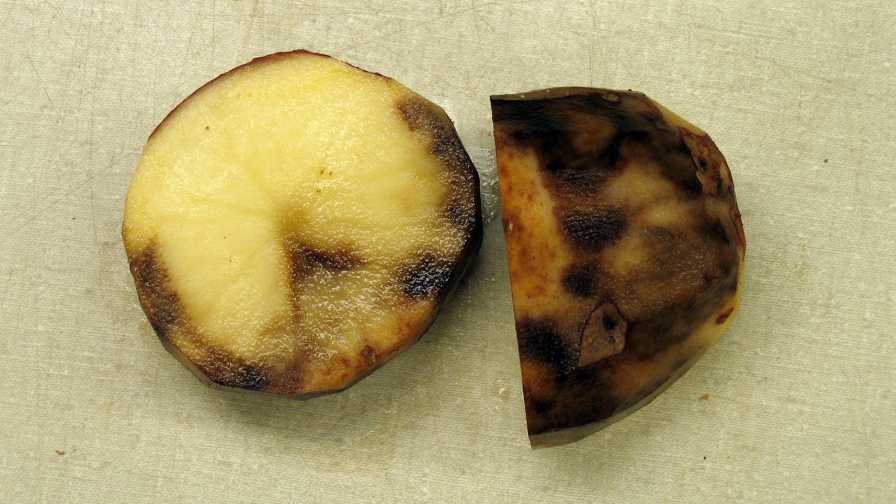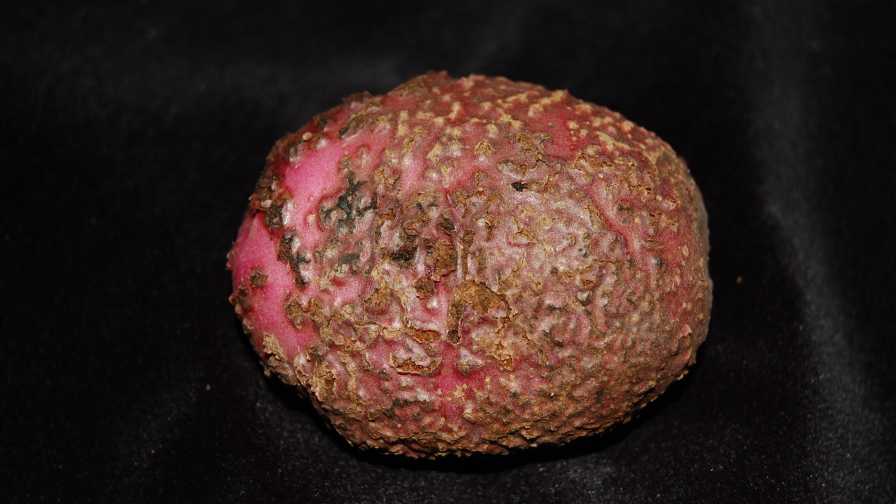#Recipe #Foody
Are you using the right fungicides for the potato diseases you are attempting to control? Understanding how fungicides work can help you choose the right product and apply it for the best effect. Here are some things to consider as you make plans for disease management next season.
Know the Pathogen
Many different types of pathogens cause plant diseases: fungi, oomycetes, bacteria, phytoplasmas, viruses, and more.
In potatoes, early blight is caused by Alternaria solani, a true fungus.

Early blight (Alternaria solani)
Late blight is caused by Phytophthora infestans, an oomycete. This is important to know, because fungicides that control true fungi do not always control oomycetes, and vice versa.

Late blight (Phytophthora infestans)
Photo by Ben Millett
Powdery scab is caused by Spongospora subterranea f. sp. subterranea, a pathogen that is more closely related to protozoa than fungi. There are no good controls for powdery scab once the pathogen has been introduced into a field — there are no fungicides that target this kind of pathogen.

Powdery scab (Spongospora subterranea f. sp. subterranea)
Photo by A.J. Gevens
Types of Fungicides
We use the term “fungicide” to describe many types of biocides that control pathogens. But most fungicides target specific groups of pathogens. It would be more correct to refer to them as fungicides, oomyticides [sic], bactericides, nematicides, etc.
Broad Spectrum vs. Narrow Spectrum
Fungicides like chlorothalonil (e.g., Bravo, Echo), metiram (e.g., Polyram), and mancozeb (e.g., Dithane, Penncozeb, and MZ-containing seed treatments) are known for having a broad spectrum of activity against many kinds of fungi and oomycetes and are used to suppress a myriad of diseases. Copper and sulfur-containing products have some activity against fungi, oomycetes, and bacteria. These products are the exception rather than the rule — most fungicides are narrower in their targets.
Protectant vs. Curative, Contact vs. Systemic
Protectant fungicides are applied to healthy plants to prevent pathogens from growing or penetrating plant tissues, but they cannot cure existing infections and must be applied before the plant is infected. Many protectants are contact fungicides that stick to plant surfaces and do not get absorbed into the plant. All of the broad-spectrum products mentioned above fit into this category.
Curative fungicides can act within the plant to stop growth of the pathogen. They work best when applied before infection occurs or within the first hours or days of infection, but curative fungicides will not stop advanced disease outbreaks. Curative fungicides are usually systemic, which means they are absorbed by the plant and are translocated to some degree to other parts of the plant.
“Systemic” Fungicides
Fungicides that are classified as “systemic” are usually divided into three categories based on how much they can move within a plant:
- Translaminar
- Systemic in the xylem
- Fully systemic in the phloem
- Translaminar Fungicides
Translaminar fungicides spread around leaf surfaces or penetrate through plant tissue, but don’t move within the plant’s vascular system. If your fungicide application only covers the tops of the leaves, translaminar products can move across the leaf to the lower surface. However, leaves lower in the canopy and those that grow after the application will not be protected. Headline (pyraclostobin, BASF) and Endura (boscalid, BASF) are translaminar fungicides that can be effective in controlling early blight when used as part of a regularly scheduled protective spray program. These products should be used in rotation with other fungicides that differ in their mode of action to lessen the risk of A. solani developing resistance to them (see www.frac.info for more information about fungicide resistance).
Systemic Fungicides
Systemic fungicides translocated in the xylem are essentially moved in an upward direction through the plant, since the xylem moves water and nutrients mostly in one direction — from the roots to the leaves. These fungicides will not redistribute much to the lower canopy when they are just applied to the tops of the plant. This is why product labels for translaminar and xylem-mobile systemic fungicides emphasize the importance of uniform coverage. However, xylem-mobile fungicides can move upward to protect new growth as long as concentrations in the plant are adequate.
In order to control soil-borne diseases, some systemic fungicides are applied directly to the soil, often as an in-furrow spray at planting or as a banded application over the row after plant emergence. Examples of xylem-mobile fungicides used in this way are Ridomil Gold (mefenoxam, Syngenta) for pink rot and Pythium leak suppression, and Quadris (azoxystrobin, Syngenta) to control Rhizoctonia stem canker or silver scurf. These fungicides will miss their target (roots, stolons, or tubers) if applications only cover the foliage.
Fully Systemic Fungicides
Fully systemic fungicides are translocated in the phloem, which moves photosynthates and some nutrients up and down the plant. Phosphorus acid products (e.g., Phostrol, NuFarm) are the only fully systemic fungicides. If they are applied to the foliage, they can move throughout the plant. These products are often applied to the foliage with the aim of protecting tubers from diseases like pink rot and late blight.
Unfortunately, there is a common misunderstanding that the word “systemic” on the label of a fungicide means the product will move throughout the plant. The majority of fungicides for which the label states “systemic” are xylem-translocated. Not realizing this can have a big impact on how well your fungicide application controls the target disease.
Author Note: This article is based on a presentation given by my colleague and plant pathologist, Dr. Lindsey du Toit, at the 2018 Pacific Northwest Vegetable Association Conference. She used examples of fungicides for onion diseases, but the principles are the same.
Carrie Huffman Wohelb is Associate Professor/Regional Specialist - Potato, Vegetable, and Seed Crops, at Washington State University. See all author stories here.
Recipe
via https://www.DMT.NEWS
Paul Rusnak, Khareem Sudlow
- Share:



0 comments